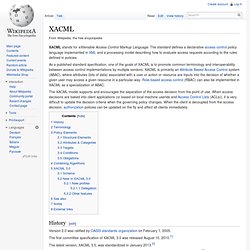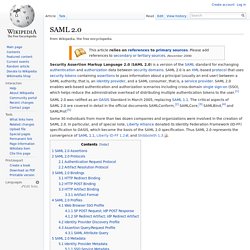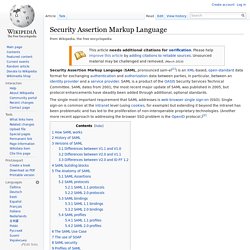

XACML. XACML stands for eXtensible Access Control Markup Language.

The standard defines a declarative access control policy language implemented in XML and a processing model describing how to evaluate access requests according to the rules defined in policies. As a published standard specification, one of the goals of XACML is to promote common terminology and interoperability between access control implementations by multiple vendors. SAML 2.0. Security Assertion Markup Language 2.0 (SAML 2.0) is a version of the SAML standard for exchanging authentication and authorization data between security domains.

SAML 2.0 is an XML-based protocol that uses security tokens containing assertions to pass information about a principal (usually an end user) between a SAML authority, that is, an identity provider, and a SAML consumer, that is, a service provider. SAML 2.0 enables web-based authentication and authorization scenarios including cross-domain single sign-on (SSO), which helps reduce the administrative overhead of distributing multiple authentication tokens to the user.[1] Some 30 individuals from more than two dozen companies and organizations were involved in the creation of SAML 2.0.
In particular, and of special note, Liberty Alliance donated its Identity Federation Framework (ID-FF) specification to OASIS, which became the basis of the SAML 2.0 specification. SAML 2.0 Assertions[edit] Security Assertion Markup Language. The single most important requirement that SAML addresses is web browser single sign-on (SSO).

Single sign-on is common at the intranet level (using cookies, for example) but extending it beyond the intranet has been problematic and has led to the proliferation of non-interoperable proprietary technologies. (Another more recent approach to addressing the browser SSO problem is the OpenID protocol.)[2]